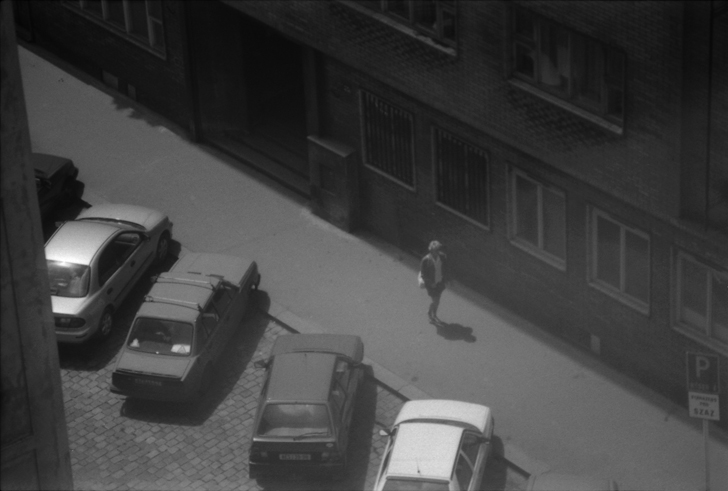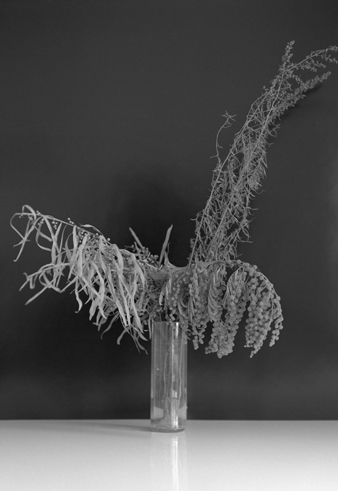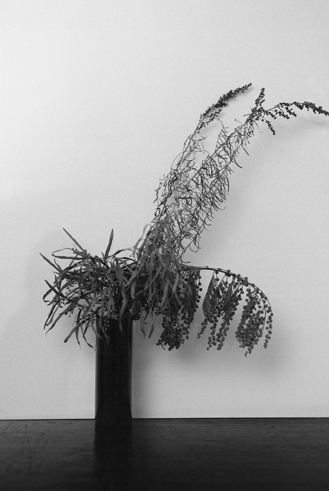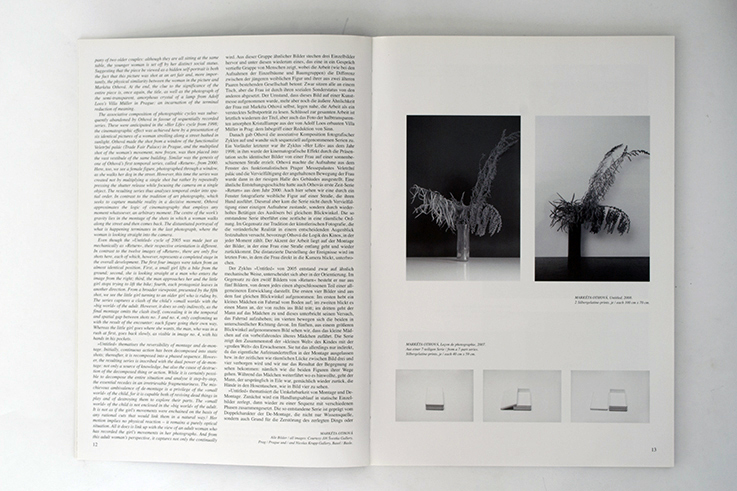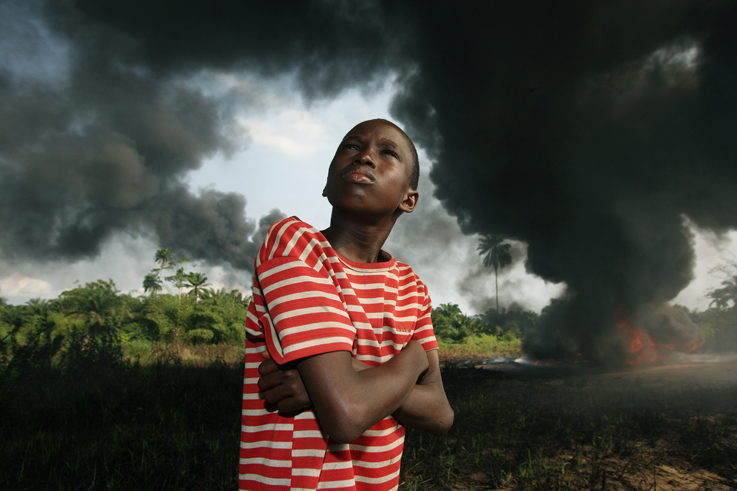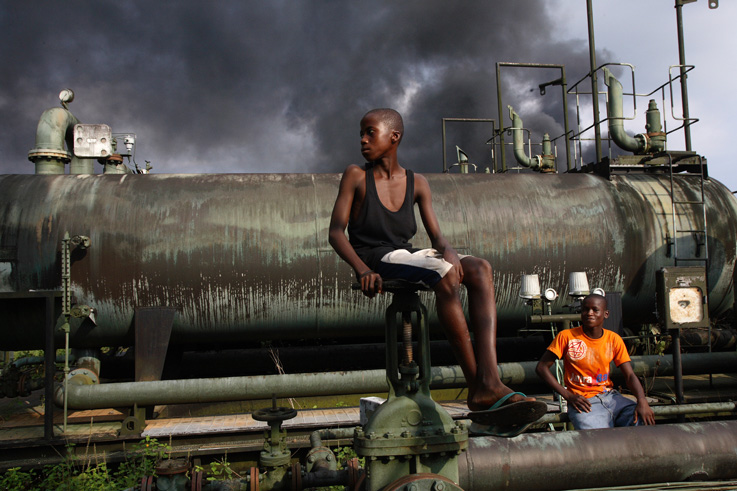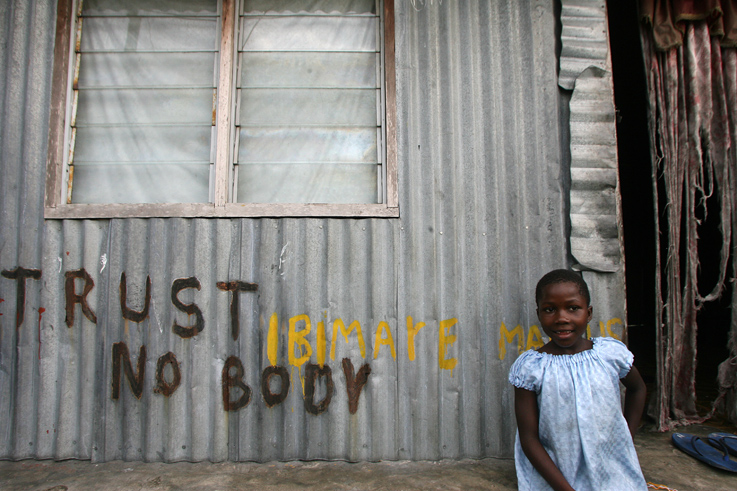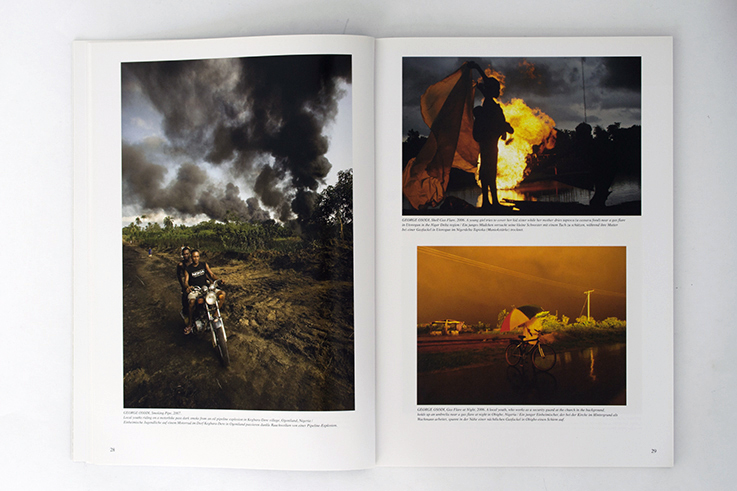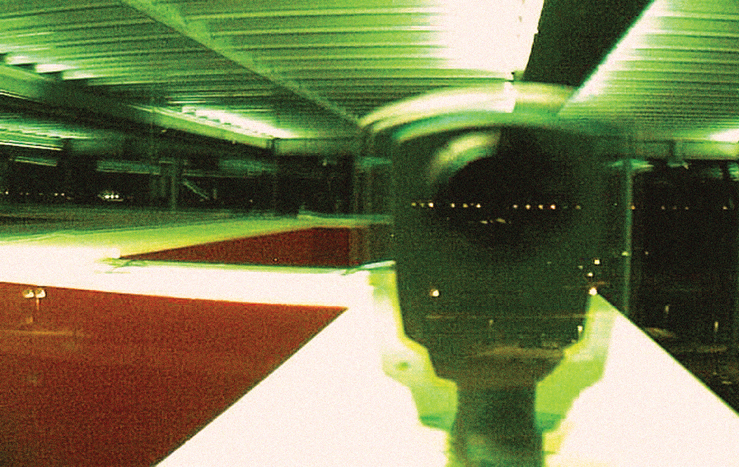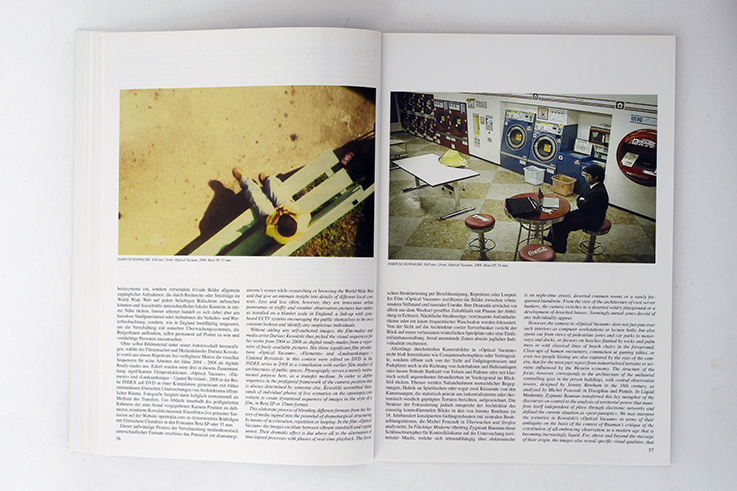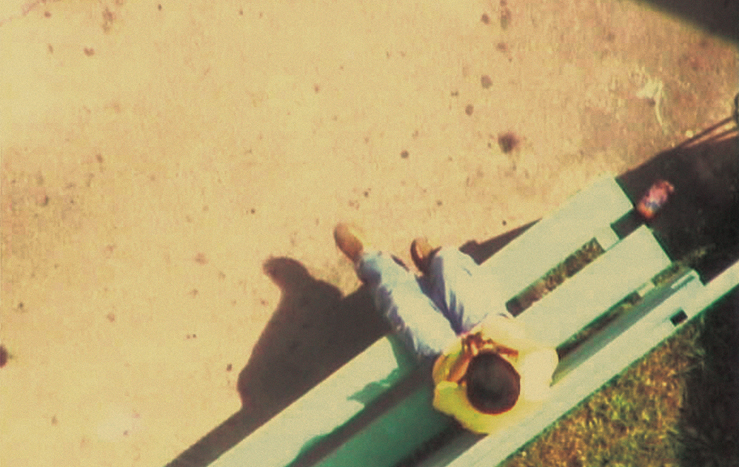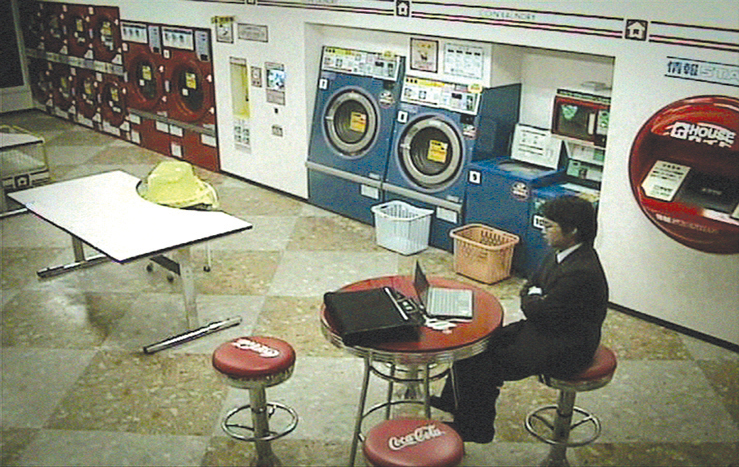Camera Austria International
106 | 2009
- KAREL CíSAR
Markéta Othová. Crystals of Time - MARKÉTA OTHOVÁ
- FRANK A O UGIOMOH
Pale reflections and fables of life: George Osodi's "real people" of the Niger Delta in Nigeria - GEORGE OSODI. OIL RICH NIGER DELTA
- ROLAND SCHöNY
Dariusz Kowalski. In the Panopticon of infinite Perception - DARIUSZ KOWALSKI
- ALICE CREISCHER, ANDREAS SIEKMANN
Why the Caquiaviri Inferno cannot be interpreted. On the Relationship of Image Production, Hegemony and Violence III

Preface
Once again, in this issue No. 106 Camera Austria features an array of aesthetic and conceptual positions that may, at first glance, appear very different, also in terms of content. The artist’s contributions and the accompanying essays in this issue look into questions of central importance in the current debate on the artistic and socio-political relevance of media that depict reality. The contributions in this issue set out to conceive art as socially necessary work, whose political significance, however, need not lie in the direct depiction of social facts but rather in uncovering layers of perception and description in which experience can be demonstrated and shared.
A critical, contradictory relationship to the sphere of the visual is characteristic of the conceptual photography of Czech artist Markéta Othová; her sensitive work, rich in variation – almost exclusively black-and-white photographs – revolves around questions of perception and the reliability of what we perceive. For as Karel Císarˇ expounds in his essay on the artist, “However, for a photograph, being indexical does not mean being faithful”. He cites her untitled diptych from 2008 as an example: “Othová has captured one and the same bunch of flowers, first against a dark and then against a light background, with the object thus being captured as light-coloured in the first photograph and dark-coloured in the second. Combined in a single installation, we will tend to consider these two independent images merely as a positive and a negative”.
Camera Austria International 106 | 2009
Preface
Once again, in this issue No. 106 Camera Austria features an array of aesthetic and conceptual positions that may, at first glance, appear very different, also in terms of content. The artist’s contributions and the accompanying essays in this issue look into questions of central importance in the current debate on the artistic and socio-political relevance of media that depict reality. The contributions in this issue set out to conceive art as socially necessary work, whose political significance, however, need not lie in the direct depiction of social facts but rather in uncovering layers of perception and description in which experience can be demonstrated and shared.
A critical, contradictory relationship to the sphere of the visual is characteristic of the conceptual photography of Czech artist Markéta Othová; her sensitive work, rich in variation – almost exclusively black-and-white photographs – revolves around questions of perception and the reliability of what we perceive. For as Karel Císarˇ expounds in his essay on the artist, “However, for a photograph, being indexical does not mean being faithful”. He cites her untitled diptych from 2008 as an example: “Othová has captured one and the same bunch of flowers, first against a dark and then against a light background, with the object thus being captured as light-coloured in the first photograph and dark-coloured in the second. Combined in a single installation, we will tend to consider these two independent images merely as a positive and a negative”.
The most impressive form of presentation of the critical documentary work of Nigerian photographer George Osodi is a projection consisting of two hundred slides, that he put together from pictures taken between 2003 and 2007. In this issue we are featuring a selection from this photographic essay: His subject is the Niger Delta, one of the richest oil producing regions in the world. The wealth obtained by Nigeria here contrasts with the social, ecological and economical impoverishment of this region. In his work, George Osodi describes the impacts of decades-long exploitation on the “real people”, as he says. “In recent times, the impact of oil in the lives of most oil producing regions has been highly paradoxical […] I want to put a human face on this paradise lost”. The powerful effect of his individual pictures sets his work in the context of critical journalism; Nigerian artist and philosopher Frank Ugiomoh sets out in an aesthetic and image-rhetorical approach to examine the photographer’s subjective gesture against the foil of the political and historical context in which this work was done.
The third position we are presenting is the film and installation works of Polish-born, Vienna-based media artist Dariusz Kowalski, that focus on surveillance and observation images taken from the flow of data on the Internet. He does not, however, “translate their visual grammar, with classical stereotypes of the control dispositif, one-to-one into a politically coded discourse of surveillance, but rather raises fundamental questions about the experience of space and the placement of the subject within a panoptically organised geography”, as Roland Schöny explains in his essay on this work.
Along with the protagonists of these main features, we would like to thank all the artists, authors and translators who contributed to this issue: We are gratified that this issue ofCamera Austria once again reflects the firm international network without which a project such as Camera Austria would not be feasible. Many thanks to our readers, subscribers and advertisers for your continued interest, and we would be pleased to meet you soon at the art shows in Basel!
Christine Frisinghelli
May 2009
Entries
Forum
DENNIS NEUSCHAEFER-RUBE
MARKO ERCEGOVIC
KATRIN WINKLER
ULRICH GEBERT
MATTHIAS ZIELFELD
EVI LEMBERGER
ANDREAS BERTAGNOLL
STEFANIE SEUFERT
Exhibitions
Dan Graham: Beyond
SANDRA WAGNER
Why Roni Horn? Roni Horn aka Roni Horn
DENISE ROBINSON
Francesca Woodman
ALBERTO MARTÍN
Deimantas Narkevicius: The Unanimous Life
YOANN VAN PARYS
Guy Tillim: Jo’burg & Avenue Patrice Lumumba
ANNE BERTRAND
Weird Beauty: Fashion Photography Now / This is not a Fashion Photograph: Selections from the ICP Collection
STEVEN HUMBLET
Between Bridges London: Three-Year Anniversary
BART VAN DER HEIDE
Bewegung in der Zelle. Mathias Poledna und Christopher Williams
YILMAZ DZIEWIOR
Akram Zaatari
ANNETT BUSCH
In Wahrheit war ich nur Berliner. Erwin Blumenfeld: DADA-Montagen 1916 – 1933
CAROLIN FÖRSTER
Karl Blossfeldt: Pflanzenstudien und verwandte Positionen
KERSTIN STREMMEL
Big City. New York Street Photography
MARIE RÖBL
William Eggleston: Democratic Camera. Photographs and Videos 1961 – 2008
MAREN LÜBBKE-TIDOW
Tatiana Lecomte: Scriptures Without Words
REBEKKA REUTER
Christian Jankowski: And Now for Something Completely Different
MANISHA JOTHADY
Aus dem Raum raus. Filmbilder von denkbaren Subjekten an sichtbaren Orten bei “Concept Film” und der “Diagonale”
DREHLI ROBNIK
Books
Ariella Azoulay: The Civil Contract of Photography / Photography Between Poetry and Politics
TACO HIDDE BAKKER
Dana Lixenberg: The Last Days of Shishmaref
MAARTJE VAN DEN HEUVEL
Michael Fried: Why Photography Matters As Art As Never Before
BERT VANDENBUSSCHE
Diedrich Diederichsen: Kritik des Auges / Tom Holert: Regieren im Bildraum
KRYSTIAN WOZNICKI
Drehli Robnik: Geschichtsästhetik und Affektpolitik. Stauffenberg und der 20. Juli im Film 1948 – 2008
JOACHIM SCHÄTZ
Kaucyla Brooke: Vitrinen in Arbeit
ANETTE FREUDENBERGER
Imprint
Publisher: Manfred Willmann. Owner: Verein CAMERA AUSTRIA, Labor für Fotografie und Theorie.
All: Lendkai 1, A-8020 Graz.
Editors: Christine Frisinghelli, Daniela Billner
Editor News section: Heidi Oswald
Copy editing: Marie Röbl
English lectorate: Dawn Michelle d’Atri
Translations: Dawn Michelle d’Atri, John Doherty, Don Mader, Wilfried Prantner, Josephine Watson, Richard Watts.

